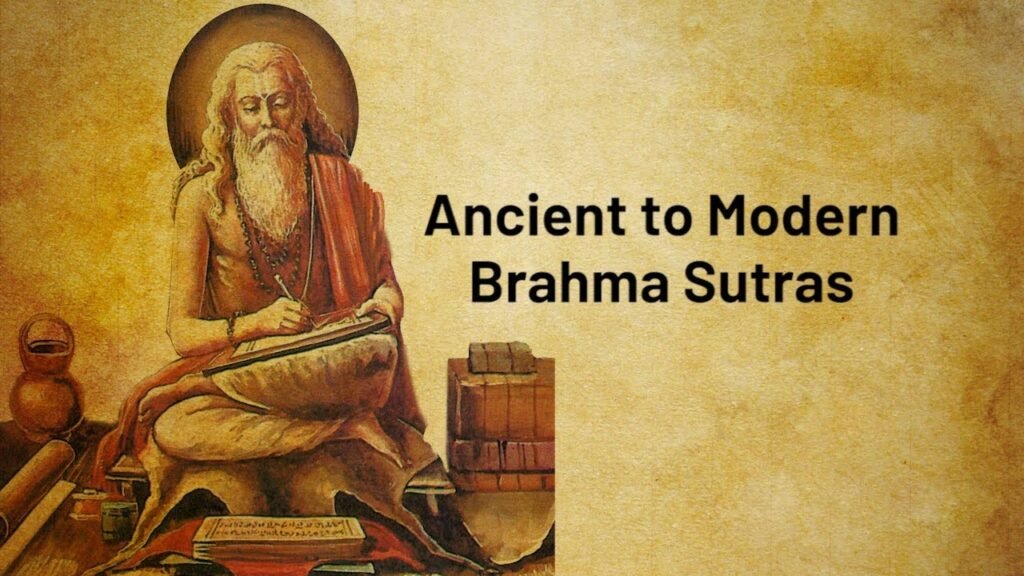Bhrama sutras with meaning
Bhrama sutras

The Brahma Sutras, also known as the Vedanta Sutras, are one of the three foundational texts (Prasthana Traya) of Vedanta philosophy, alongside the Upanishads and the Bhagavad Gita. Composed by Badarayana (Vyasa), these sutras aim to systematize and summarize the teachings of the Upanishads concerning Brahman, the ultimate reality. The Brahma Sutras consist of 555 aphoristic sutras divided into four chapters, each subdivided into four sections (pādas). The total work forms a concise yet profound framework for interpreting Vedantic thought.
The Brahma Sutras begin with the famous aphorism:
“Athāto Brahma Jijñāsā”
(Now, therefore, the inquiry into Brahman.)
This opening line establishes the purpose of the text – a systematic philosophical investigation into Brahman, the non-dual, infinite, and eternal reality that underlies all existence.
The text does not stand alone in conveying its philosophy. It assumes that the reader is already acquainted with the Upanishads, and its cryptic style necessitates interpretation. As a result, the Brahma Sutras have been extensively commented upon by major philosophers like Adi Shankaracharya, Ramanujacharya, Madhvacharya, and others, each giving rise to distinct schools of Vedanta: Advaita, Vishishtadvaita, and Dvaita respectively.
Structure of the Brahma Sutras
- Chapter 1: Samanvaya (Harmony)
- This chapter demonstrates that all the teachings of the Upanishads speak about one ultimate reality — Brahman.
- It refutes the idea that various texts speak about different deities or ends and shows their essential unity.
- Chapter 2: Avirodha (Non-Contradiction)
- It addresses objections raised by other philosophical systems such as Nyaya, Samkhya, Buddhism, and Jainism.
- The goal is to establish that Vedanta is a consistent and rational philosophy, free from internal or external contradictions.
- Chapter 3: Sadhana (Means)
- This chapter focuses on the means to attain Brahma-jnana (knowledge of Brahman).
- It discusses the role of ethical conduct, meditation, and knowledge, as well as the qualifications required for a seeker.
- Chapter 4: Phala (Result)
- The final chapter explains the nature of liberation (moksha).
- It elaborates on what happens to the soul after liberation and the state of unity with Brahman.
Philosophical Themes
- Brahman is the cause of the world – not material but the intelligent cause.
- The individual self (Atman) is not different from Brahman, especially in Advaita Vedanta.
- The world is ultimately illusory (Maya) and only Brahman is real (in Advaita).
- Karma and rebirth are governed by ignorance of the Self.
- Liberation (moksha) is attained through realization of one’s true nature as Brahman.




















































